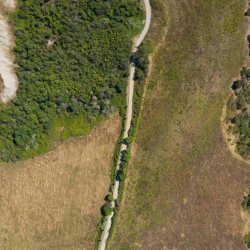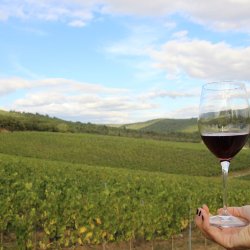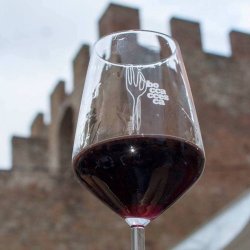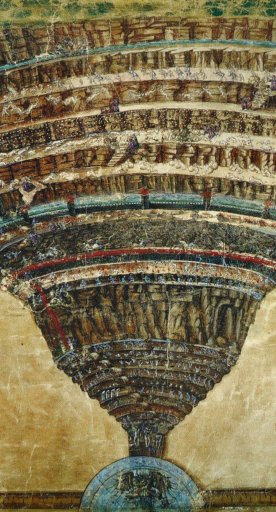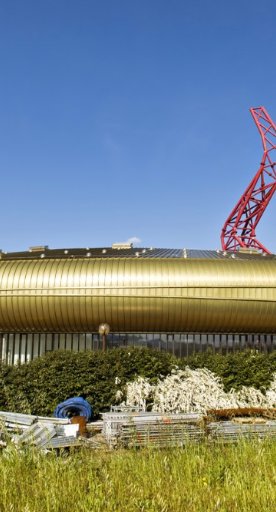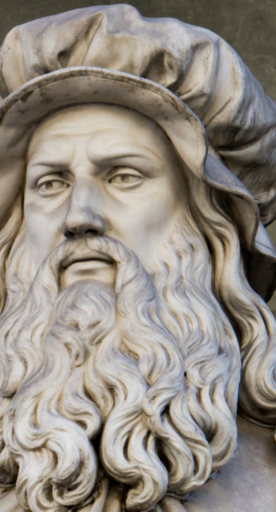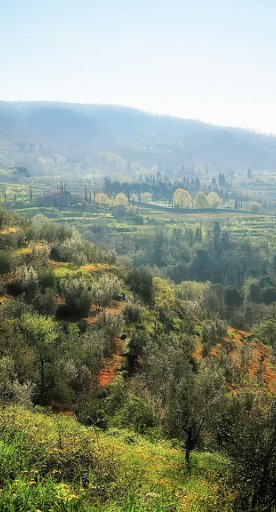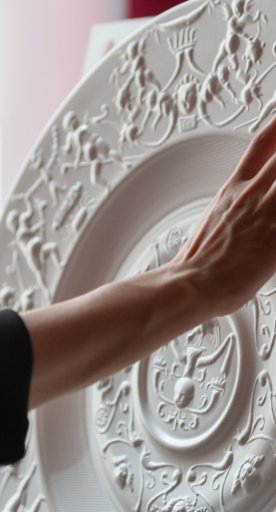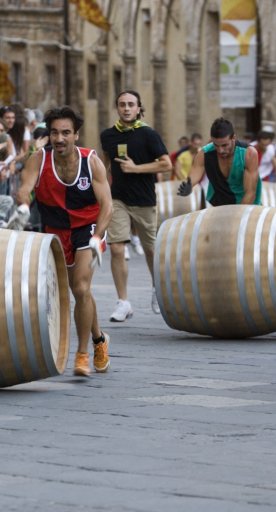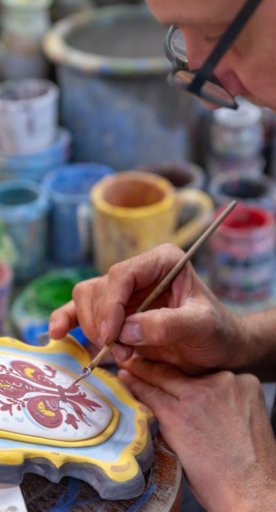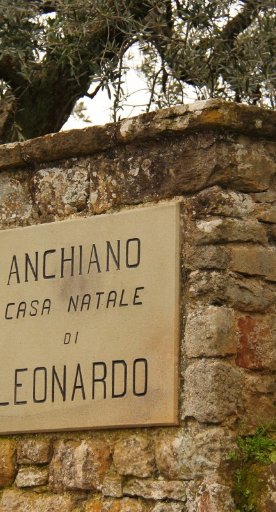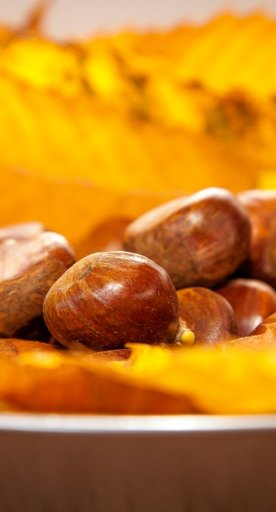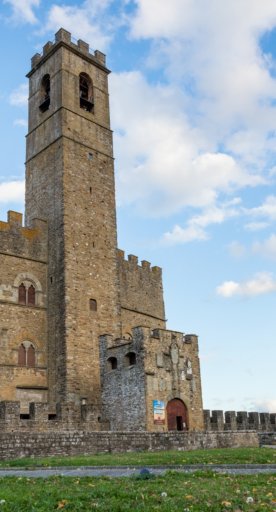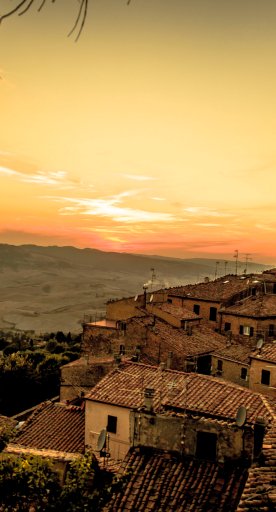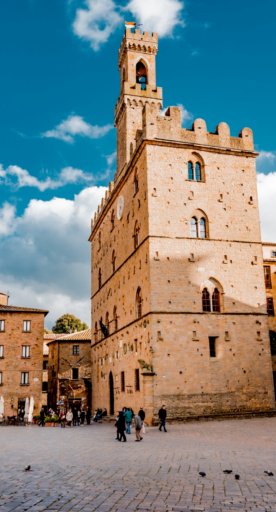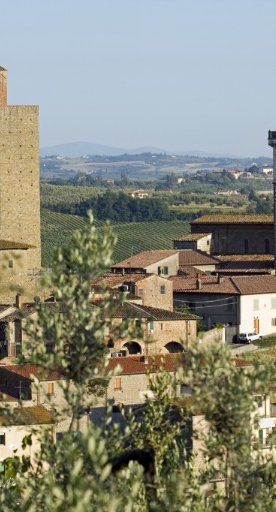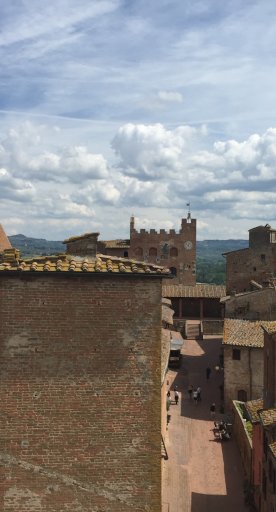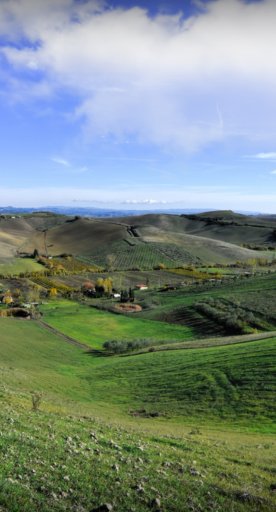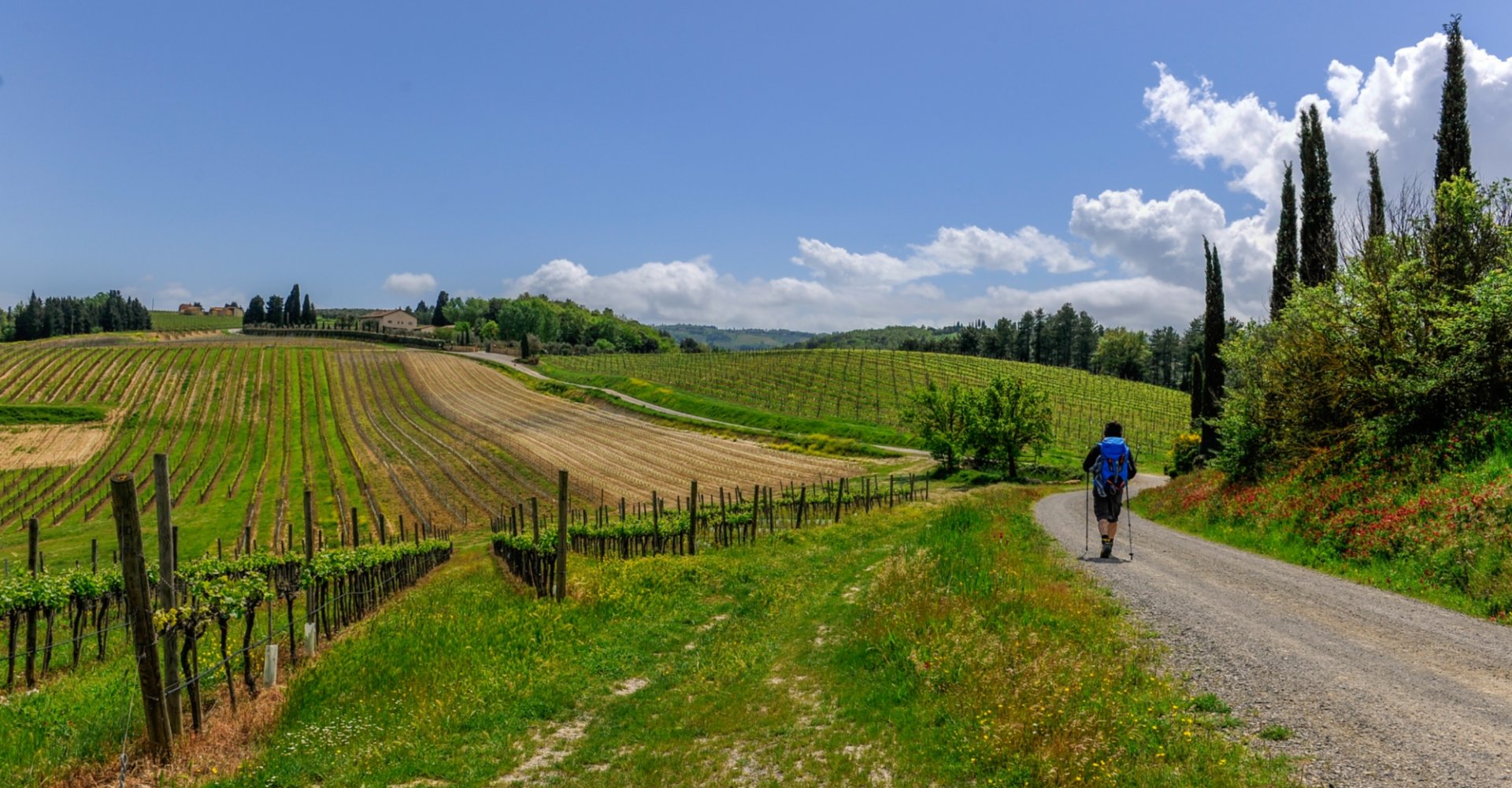
3 reasons to hit the trail in Tuscany
Here's why walking along the Via Francigena is a unique experience
We are now accustomed to all the comforts and, with all the means of transportation available to us, why do people still set out on foot? There is actually more than one answer.
People who walk along historic trails, such as the Via Francigena, should be asked this question. In 2022 the Via Francigena was traveled by about 50,000 walkers and pilgrims (an estimated 40,000 in 2021).
If we take a look at the 2023 data collected by viefrancigene.org, we find that the Francigena is undertaken by people from 45 countries and is now an emblem of slow travel that allows people to be in touch with nature but also to pass through beautiful cities of art, allows them to share experiences and immerse themselves in a spiritual dimension.
Lucca, San Miniato and Siena are the most popular starting points, with Tuscany confirming itself as the most popular land for wayfarers considering the entire European route. And the largest group of walkers at the moment is from Italy.
Another fact is of great interest: 85.2% of people who travel along the Francigena do so on foot, the remaining 14% use bicycles and some travel on horseback.
Summarised in 3 key words, here are the advantages of undertaking a slow journey, particularly on the Via Francigena.
-
1.Encounter
-
2.Discovery
-
3.Wellness
Encounter
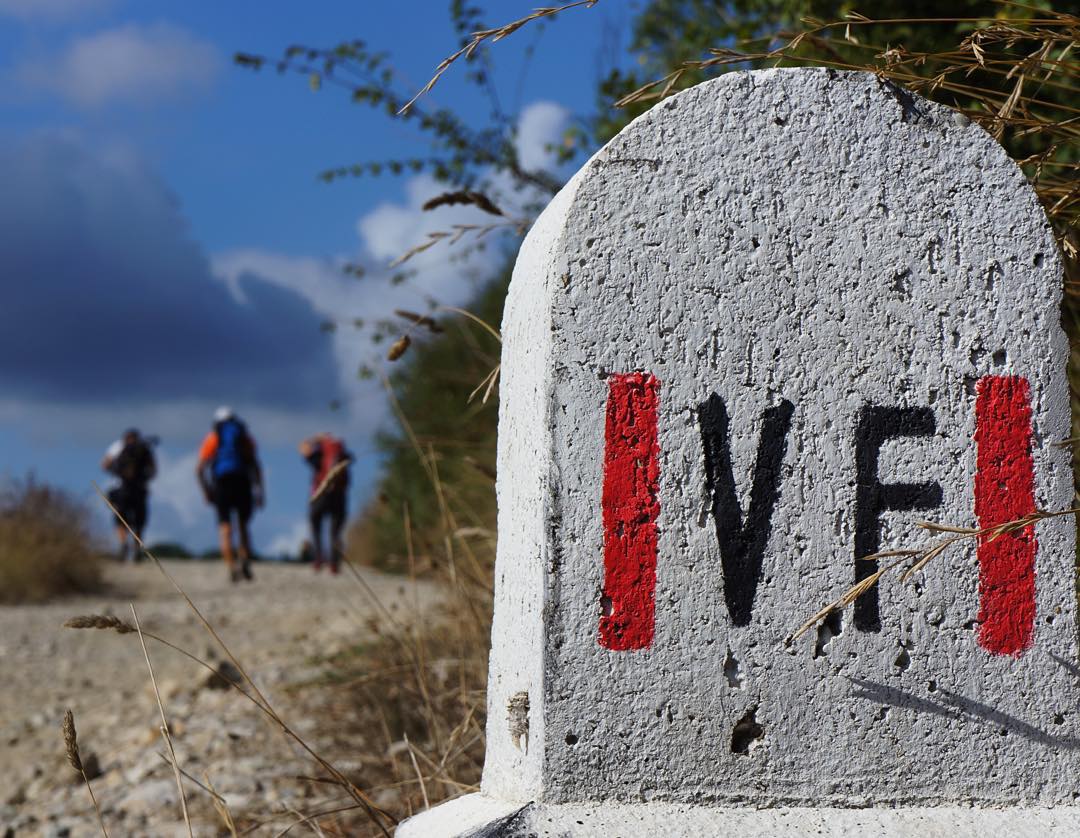
If you embark on a slow-paced journey, one thing is sure: you will find someone to chat with or you can walk in silence listening to the breath of nature. and the sound of footsteps.
Walks on historical paths provide a precious opportunity to meet other wayfarers and share your experiences with them, walking side by side, with a glance and a smile, with encouragement or a chat about the route.
Welcoming people allows you to get to know the stories and secrets of small villages and meet unforgettable religious figures: in Siena, Sister Ginetta dedicated more than 20 years to helping the needy and lending a hand to the pilgrims of the Francigena, until 2019, when she changed her seat. Like her, there are still many locals ready to welcome you, tell you anecdotes and let you taste traditional Tuscan dishes, perfect for warming the heart and nourishing the soul.
Discovery

As you travel the Via Francigena in Tuscany, you can choose from among 16 stages (and 3 alternative routes) through varying landscapes, from mountains to hills, dotted with villages and cities of art with a long history and endless charm.
From the Cisa Pass you reach the Lunigiana, a borderland dotted with castles surrounded by vegetation. The stele statues in Pontremoli will surprise you, on a journey through history. Then we approach the coast and reach Massa, in the shadow of the Apuan Alps. From the Apuan Riviera we arrive in Versilia - and "little Athens" Pietrasanta - and then move on as far as Lucca, the city of a hundred churches. Continuing our journey we arrive in Altopascio, known for its bread, a symbol of hospitality, and we cross the Terre di Pisa (San Miniato, an excellent producer of truffles). Along the way we meet Gambassi Terme, San Gimignano and its towers, fortified Monteriggioni and splendid Siena, a treasure chest of art and culture.
From the peculiar landscape of the Crete Senesi and of the Val d'Arbia we arrive in the Val d'Orcia, a Unesco heritage site, with San Quirico d'Orcia and Bagno Vignoni. We cross the Amiata area to reach Radicofani and begin the first stage that reaches Lazio, at Acquapendente.
In the nearly 400 Tuscan kilometers of the path there is so much to see and see again, with the wonder of those who travel at a slow pace, savoring every moment of the journey.
Wellness
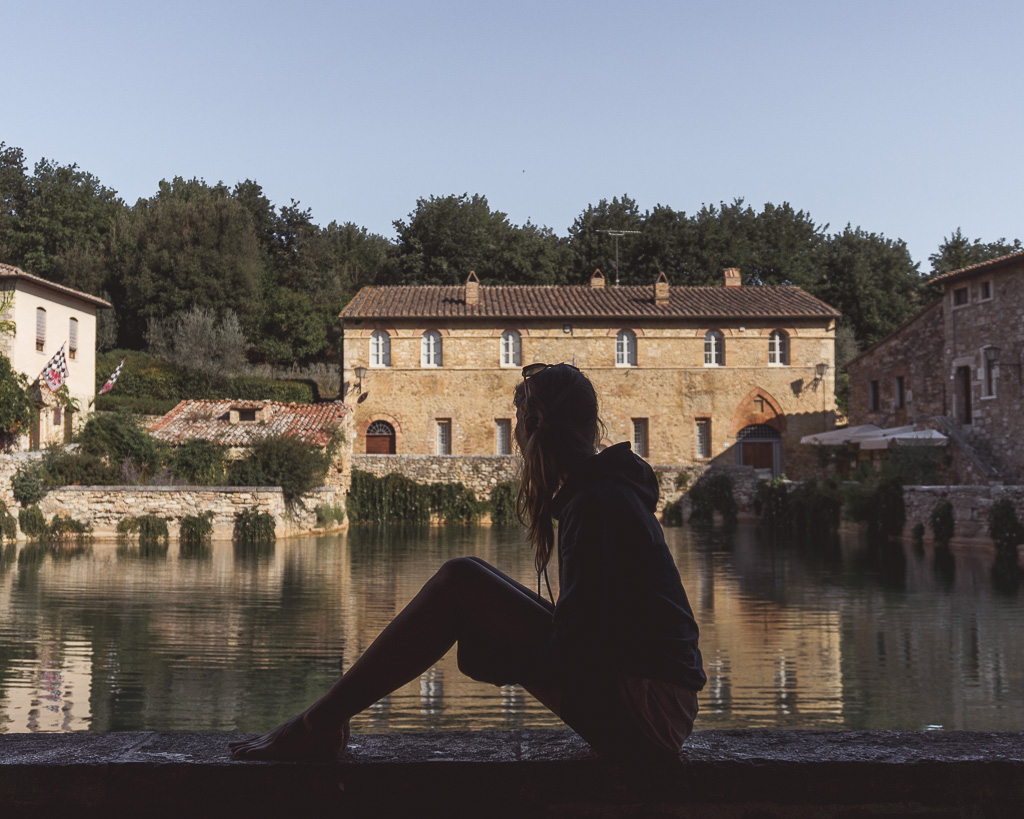
Walking is a physical and mental panacea. Breathing pure air while immersing oneself in nature and being active contribute to one's overall well-being.
And at the end of the journey, after hours of walking, one is undoubtedly rewarded by a deep satisfaction, a sense of calm that sweeps away fatigue.
To recharge our energy, it is very important to get away from the chaos and routine made up of traffic, commitments, hyperconnectedness and constant on-call. Step by step, following one's own rhythm, enveloped by the sounds of nature, it is easier to get in touch with oneself, listen to one's inner voice and get closer to one's spiritual part, leaving behind the daily worries that suddenly seem to lighten.
You should not underestimate the possibility of stopping at spas along the way. For example, those in Bagno Vignoni, or the Terme della Via Francigena (Thermal Baths of the Via Francigena) in Gambassi Terme will let you relax between stops to take some time among hot water and beneficial vapors, before setting off again.

